Properly socializing your dog is essential for raising a well-behaved and balanced companion. It involves introducing your pup to new environments, people, other animals, and situations in a controlled, positive way. This approach helps boost your dog's confidence while calmly navigating different situations without fear or aggression.
Socialization is important for both young puppies and adult dogs alike. Puppy socialization is important because it sets the foundation for your puppy's life, but adult dogs can still learn and adjust with patience and care. Many dogs, regardless of age, benefit from ongoing efforts to socialize. It’s never too late to begin socializing with your dog, and the positive effects will benefit them throughout their life.
What is Socialization?
Dog socialization involves gradually exposing your dog to various people, environments, animals, sounds, and experiences in a calm, controlled setting. Socializing your puppy early on ensures they grow into a well-adjusted dog. This exposure helps dogs, whether puppies or adult dogs, learn to respond appropriately to various situations, including interactions with other puppies, dogs, strangers, and the outside world. Proper socialization can prevent future behavioral issues and help your dog navigate everyday experiences like visits to busy parks or dog parks.
16 Ways To Socialize Your Dog
Socializing a Dog with Other Dogs
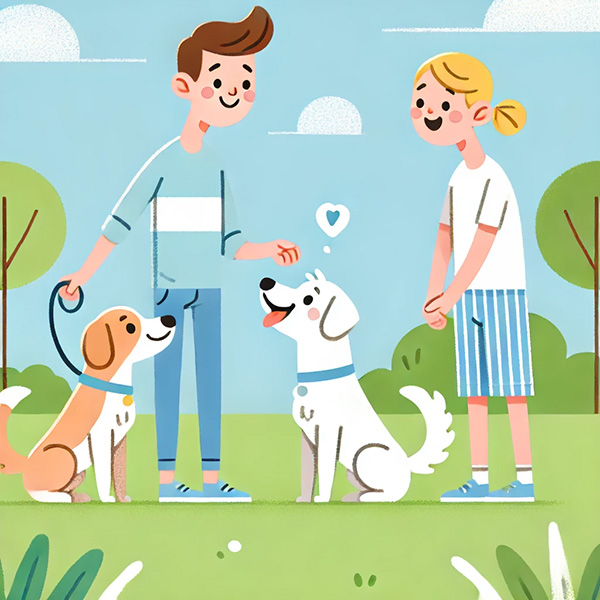
Starting on neutral ground is important to prevent territorial behavior when socializing your dog with other dogs. Initiate brief, positive encounters to familiarize both dogs with each other's presence. This is particularly important for older or adult dogs with limited positive experiences with other dogs.
Dog parks can overwhelm many dogs, especially young puppies or unsocialized adult dogs. If your dog is uncomfortable in these environments, start with smaller, more controlled interactions in puppy play sessions or supervised socialization classes. From the start, ensuring positive experiences with other dogs will help prevent behavioral issues.
Socializing a Dog with People
Introducing your dog to a diverse range of people is as crucial as socializing them with other dogs. Allow your dog to interact with people of different ages, ethnicities, and genders to help them become comfortable with all types of individuals. This practice helps minimize anxiety and supports your dog in staying well-adjusted throughout their life.
When introducing your dog to new people, offer treats or praise when they stay calm and friendly. Keep interactions brief and allow your dog to approach at their own pace to create a positive association with meeting strangers.
Explore City Streets
This helps your dog get used to busy surroundings, including cars, bikes, and groups of people. The noise and bustle will help desensitize them to urban environments, making future trips to town less stressful.
Explore Parks and nature trails
These areas provide exposure to natural sounds, animals, and other dogs. In quieter environments, your dog will experience new scents, textures (grass, dirt, pavement), and wildlife, contributing to a more well-rounded sense of the world.
Shopping plazas or pet-friendly stores
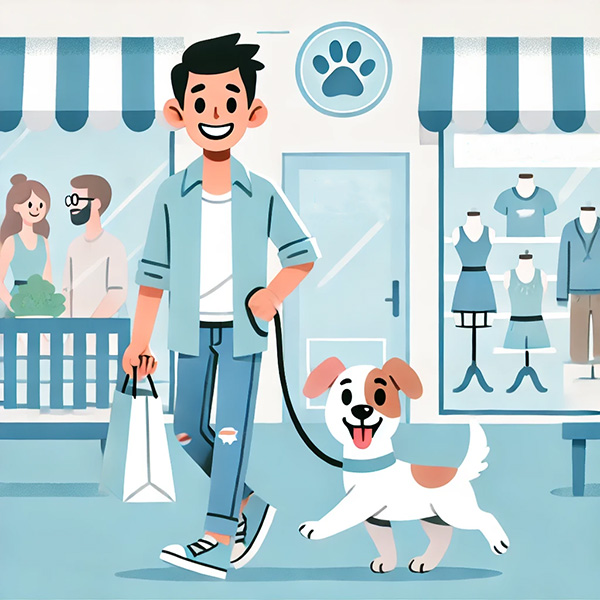
Some stores or open-air plazas allow dogs, giving them a chance to encounter people, shopping carts, and various noises in a controlled, public setting.
Pet-friendly cafes
Visiting outdoor cafes where dogs are welcome helps them experience the hustle and bustle of restaurant life while remaining calm.
Walk Near Crowds Without Direct Interaction
If possible, introduce your dog to different levels of crowd activity. Start with small groups of people and gradually work up to busier settings, like outdoor markets or festivals. This helps prevent social anxiety when around large gatherings.
Go On Public Transportation
If your lifestyle includes buses, trains, or even ferries, it’s helpful to gradually introduce your dog to these environments. Short trips can help them become accustomed to public transportation's movement, sounds, and vibrations.
Supervised Group Classes or Meetups
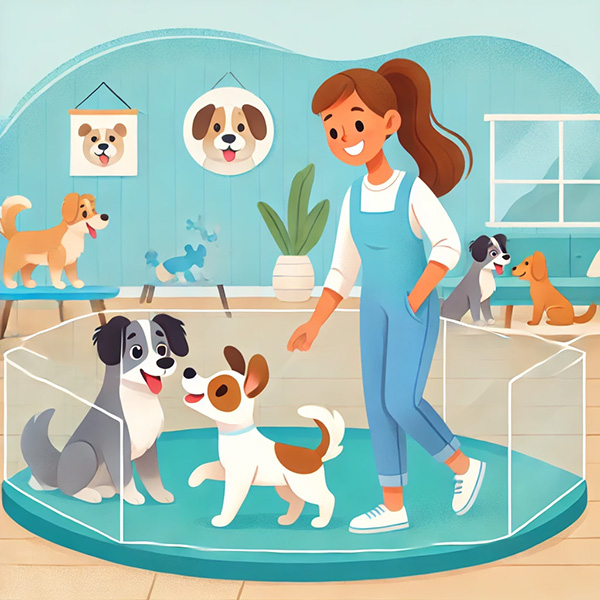
Signing your dog up for socialization classes, puppy classes or dog meetups are great ways to enhance their social skills. These classes and meets are especially important for young puppies since they are in a critical stage of their socialization period.
Group classes are structured to introduce puppies and older dogs to new experiences, sounds, and surfaces while focusing on reinforcing basic obedience skills. Experienced trainers guide these socialization classes' interactions, helping pet parents and their pups develop strong foundations for positive socialization. Additionally, all dogs in these classes must be fully vaccinated to prevent health issues and ensure safe interactions.
Visit Pet-Friendly Stores
Taking your dog to pet-friendly stores is a great way to introduce them to new experiences, people, and animals in a controlled and safe environment. It’s a form of real-world socialization that allows your dog to practice good manners and develop positive associations with new places and encounters.
Attend Dog-Friendly Events
Take your dog to outdoor festivals, farmers' markets, or dog-friendly events where they can encounter large crowds and various stimuli. Start with less crowded events and gradually work up to busier environments. This helps them get used to public spaces and learn to stay calm despite the activity around them.
Car Rides and Trips
Frequently take your dog on car rides to get them used to the sensation of traveling. Start with short trips to positive destinations like parks or pet stores, and gradually increase the distance and duration. This helps your dog become comfortable with cars, preventing anxiety or motion sickness during future trips.
Introduce to Children
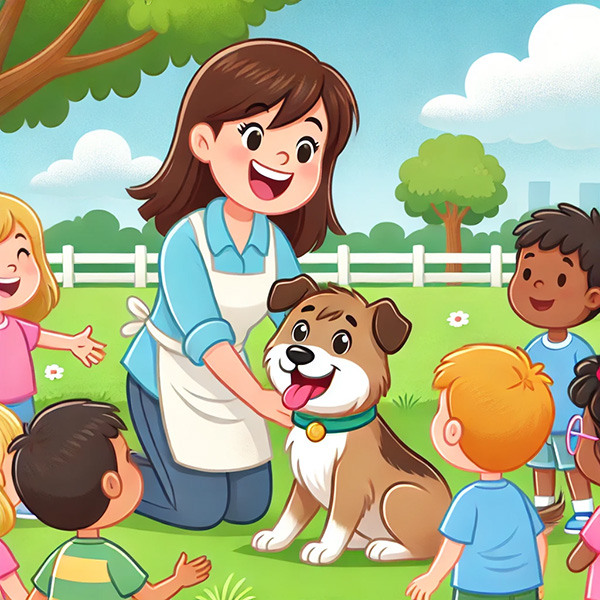
If your dog isn’t used to being around children, introduce them in a controlled manner. Let the child approach calmly and offer treats or toys to your dog, ensuring the experience is positive and safe. Kids can be unpredictable, so this exposure helps your dog become familiar with different energy levels and movements.
Exposure to Different Weather Conditions
Walk your dog in different weather conditions, such as light rain, snow, or during cooler evenings. This helps your dog adapt to various environments, reducing fear or reluctance when the weather changes. They’ll become more resilient and comfortable in different outdoor conditions.
Visit a Dog Park (with Caution)
While dog parks can be a good place for dogs to socialize, they should be used cautiously. Start by visiting during quieter times and gradually expose your dog to more active times. Supervise interactions closely, and if your dog seems overwhelmed or uncomfortable, it's best to leave. Positive experiences at the dog park can help build confidence around other dogs.
Participate in Dog Sports
Enroll your dog in dog sports like agility, flyball, or rally obedience. These activities expose them to different dogs and environments while providing mental and physical stimulation. The structure of the sport helps them focus on tasks while being around distractions, building confidence and obedience.
Tips To Socializing Your Dog
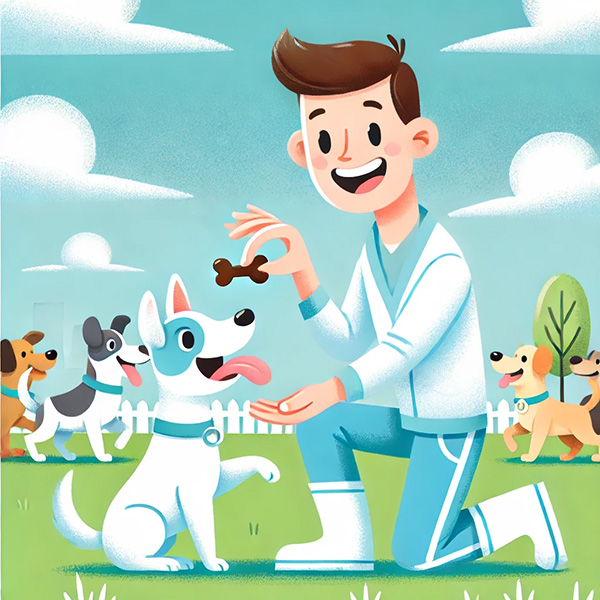
Train Around Distractions
Training your dog around distractions is a key component of socialization and obedience. It ensures that your dog listens to commands and behaves appropriately, even when faced with enticing distractions like other dogs, people, or exciting environments. Practice commands and obedience in new, distracting environments. For example, practice "sit" or "stay" in a park or around other dogs. This reinforces good behavior in the presence of distractions and encourages focus on you.
Utilize Positive Reinforcement
Using positive reinforcement is essential for successful dog socialization. Rewarding good behavior with treats, praise, or play helps your dog form positive associations with new experiences. This is essential in ensuring your dog sees new sights, sounds, people, and animals as enjoyable and non-threatening.
For instance, if your dog stays calm when faced with new sights or meets someone new, promptly reward them with treats or praise. Over time, this creates a positive reinforcement cycle, encouraging your dog to respond confidently to new environments and situations. This method is especially useful for young puppies during puppy socialization and older dogs who might need extra encouragement to engage with the world around them.
Understanding Your Dog’s Triggers
A trigger is anything that causes a dog to become anxious, fearful, or aggressive. Many dogs are commonly triggered by loud noises, strangers, and other animals. Identifying these triggers early in your dog’s life, or when adopting an adult dog, is critical in successful dog socialization.
Watch your dog’s body language carefully; signs of discomfort, such as lip licking, tail tucking, or yawning, may suggest that your dog feels uneasy. Gradually introducing your dog to its triggers in a controlled way, combined with positive reinforcement, helps reduce its anxiety and improve its ability to cope with new situations.
Knowing When to Stop
Recognizing your dog’s body language is crucial during socialization. For instance, behaviors such as lip licking, yawning, or a tucked tail can signal that your dog is experiencing fear or stress. Whether you are at a dog park, a vet’s office, or introducing your dog to a new person, understanding these signs can help prevent negative reactions and behavior problems.
If you observe these signs, it’s time to pause and give your dog a break before resuming the interaction. These breaks are even more important in building positive experiences for older dogs or those with limited socialization.
Counter-Conditioning and Desensitization
Counter-conditioning and desensitization are crucial methods for helping dogs address particular fears or triggers. Counter-conditioning entails associating the feared trigger with something positive, such as treats or playtime, to alter your dog’s emotional reaction. For instance, if your dog is anxious around other dogs, giving treats when it sees another dog can help build a positive association.
Desensitization involves gradually introducing your dog to the trigger at a low intensity and progressively increasing the exposure as your dog becomes more comfortable. These methods are highly effective when done consistently and with patience.
Maintaining Socialization Throughout a Dog’s Life
Socialization is not a one-time event—it’s a lifelong process. As your pet ages, it’s important to continue exposing them to new people, environments, and situations to keep them well-adjusted. Regular socialization helps prevent behavioral issues and keeps your dog confident in various situations, whether they’re encountering different animal species or walking through a busy park.
Pet parents should regularly schedule walks in different environments, introduce their dog to new sounds and surfaces, and reinforce good social behaviors throughout the dog’s life.
Common Mistakes in Socialization
One of the most common mistakes pet parents make in socializing their dogs is overwhelming them with too many new experiences too quickly, a concept known as “flooding.” This may result in anxiety and behavioral problems, reversing the progress achieved during early socialization.
It’s essential to take it slow and gradually allow your dog to adjust to new environments, sounds, and interactions. Start with short walks and calm settings before progressing to more stimulating situations like large groups or dog parks. Ensuring your dog remains within their comfort zone during socialization prevents fear and fosters good behavior.
Positive reinforcement during socialization can create a positive association with new experiences, helping your pup feel secure and confident as they explore the outside world.
